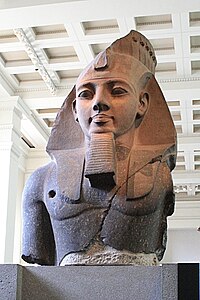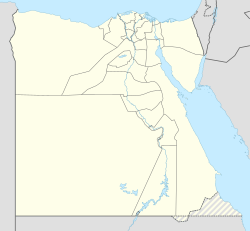-
Use Cases
-
Resources
-
Pricing
Ancient Egypt Timeline
(3100 BCE - 1069 BCE)Prehistoric Egypt
Development of Nile Valley Cultures
5500 BC
% complete
Small tribes living in the Nile valley had developed into distinct cultures by 5500 BC, demonstrating control of agriculture and animal husbandry, as evidenced by their pottery, personal items, and trade practices.
Image source: Prehistoric Egypt

Trade with Levant and Mesopotamia
3600 BC
% complete
Mutual trade with the Levant was established during Naqada II, around 3600 BC, marking the beginning of trade with Mesopotamia and laying the foundation for long-term economic interactions.
Image source: Gerzeh culture

Emergence of Ancient Egyptian Civilization
3100 BC
% complete
Ancient Egyptian civilization coalesced around 3100 BC with the political unification of Upper and Lower Egypt under Menes, marking the beginning of dynastic rule and the establishment of a centralized state.
Image source: Ancient Egypt

Early Dynastic Period
Establishment of Dynastic Kings
3000 BC
% complete
In the Early Dynastic Period, dynastic kings solidified control over lower Egypt by establishing a capital at Memphis, enabling them to control agriculture, trade routes, and the labor force.
Image source: Early Dynastic Period (Egypt)

First Intermediate Period
Beginning of First Intermediate Period
2200 BC
% complete
Severe droughts between 2200 and 2150 BC, coupled with economic erosion, led to the 140-year period of famine and strife known as the First Intermediate Period.
Image source: First Intermediate Period of Egypt

Middle Kingdom
Unification of Upper and Lower Egypt
2055 BC
% complete
The northern Theban forces under Nebhepetre Mentuhotep II defeated the Herakleopolitan rulers around 2055 BC, reuniting the Two Lands and establishing the Middle Kingdom.
Image source: Mentuhotep II

Hyksos Rule and Theban Resistance
1785 BC - 1555 BC
% complete
The Hyksos, a Western Asian people, seized control of Egypt around 1785 BC, leading to a prolonged conflict with Thebes that lasted more than 30 years until 1555 BC.
Image source: Hyksos

New Kingdom
Egyptian Empire under Tuthmosis III
1425 BC
% complete
When Tuthmosis III died in 1425 BC, Egypt had an empire extending from Niya in northwest Syria to the Fourth Cataract of the Nile in Nubia, solidifying loyalties and opening access to critical imports.
Image source: Thutmose III

Reforms of Amenhotep IV
1350 BC
% complete
Around 1350 BC, Amenhotep IV ascended the throne and instituted radical reforms, threatening the stability of the New Kingdom and causing societal upheaval.
Image source: Akhenaten

Rule of Ramesses II
1279 BC
% complete
Ramesses II ascended the throne in 1279 BC and led Egypt to a period of great architectural and military achievements, including the Battle of Kadesh and the signing of the first recorded peace treaty around 1258 BC.
Image source: Ramesses II

Decline of Middle Kingdom
Decline of Middle Kingdom Power
1078 BC
% complete
Following the death of Ramesses XI in 1078 BC, Smendes assumed authority over the northern part of Egypt, ruling from the city of Tanis, marking a decline in central authority.
Image source: Ramesses XI

Late Period
Introduction of Coinage in Egypt
500 BC - 499 BC
% complete
During the 5th century BC, coined money was introduced into Egypt from abroad, leading to the adoption of standardized pieces of precious metal and the reliance on coinage by international traders in subsequent centuries.
Image source: Egyptian pound

Decline of Hieroglyphic Writing
300 - 399
% complete
Although formal hieroglyphs were used in a ceremonial role until the 4th century AD, by then only a small handful of priests could still read them, signifying the decline of this ancient writing system.
Image source: Egyptian hieroglyphs

Meroitic Period
Development of Meroitic Language
200 BC - 499
% complete
Meroitic is the oldest written language in Africa other than Egyptian, and was used from the 2nd century BC until the early 5th century AD, contributing to the linguistic diversity of ancient North Africa.
Image source: Meroitic language

Ptolemaic Period
Introduction of Coptic Alphabet
1 AD - 99 AD
% complete
Around the 1st century AD, the Coptic alphabet started to be used alongside the Demotic script, marking a significant development in Egyptian writing systems.
Modern Discoveries
Analysis of Ancient Mummies
2012
% complete
In 2012, mummies of two 20th dynasty individuals, Ramesses III and 'Unknown Man E', were analyzed by a team of researchers, shedding light on ancient Egyptian genetics and familial relationships.
Image source: Mummy

Genetic Studies on Ancient Egyptians
2017
% complete
A 2017 study by Schuenemann et al. analyzed ancient DNA samples from Abusir el-Meleq, providing insights into the genetic diversity and ancestry of ancient Egyptians.
Image source: Genetic history of Egypt

Analysis of Djehutynakht Mummy
2018
% complete
In 2018, the 4000-year-old mummified head of Djehutynakht, a governor in the Middle Kingdom, was analyzed for mitochondrial DNA, offering new perspectives on ancient Egyptian genetic lineages.
Image source: Djehutynakht

DNA Analysis of Tutankhamun's Family
2020
% complete
A 2020 DNA study by Gad, Hawass et al. analyzed mitochondrial and Y-chromosomal haplogroups from Tutankhamun's family members, providing insights into the genetic composition of the 18th Dynasty rulers.
Image source: Tutankhamun

Discovery of Ancient Egyptian Port
2023
% complete
In 2023, a team of Franco-Egyptian archaeologists discovered what is believed to be the world's oldest port, dating back about 4500 years, near Wadi el-Jarf, providing new insights into ancient Egyptian maritime activities.
Image source: Wadi al-Jarf

Key Facts
- The construction of the Great Pyramid of Giza took place during the reign of Pharaoh Khufu in the 26th century BCE.
- The Old Kingdom, known for its monumental pyramid construction, lasted from 2686 to 2181 BCE.
- The New Kingdom, a period of great Egyptian power and prosperity, began in 1550 BCE.
- Pharaoh Akhenaten initiated a religious revolution by promoting the worship of the sun disk Aten during the 18th dynasty.
- The decline of Ancient Egypt started with the invasion of the Sea Peoples and ultimately led to the conquest by the Persians in 525 BCE.
Source
This Ancient Egypt timeline was generated with the help of AI using information found on the internet.
We strive to make these timelines as accurate as possible, but occasionally inaccurates slip in. If you notice anything amiss, let us know at [email protected] and we'll correct it for future visitors.
Create a timeline like this one for free
Preceden lets you create stunning timelines using AI or manually.
Customize your timeline with one of our low-cost paid plans
Export your timeline, add your own events, edit or remove AI-generated events, and much more
Free
$
0
free forever
No credit card required.
Basic
$
10
/month
billed annually
Cancel anytime.
Pro
$
16
/month
billed annually
Cancel anytime.
Common Questions
Can I cancel anytime?
Yes. You can cancel your subscription from your account page at anytime which will ensure you are not charged again. If you cancel you can still access your subscription for the full time period you paid for.
Will you send an annual renewal reminder?
Yes, we will email you a reminder prior to the annual renewal and will also email you a receipt.
Do you offer refunds?
Yes. You can email us within 15 days of any payment and we will issue you a full refund.
What if I have more questions?
Check out our pricing docs or send us an email anytime: [email protected].